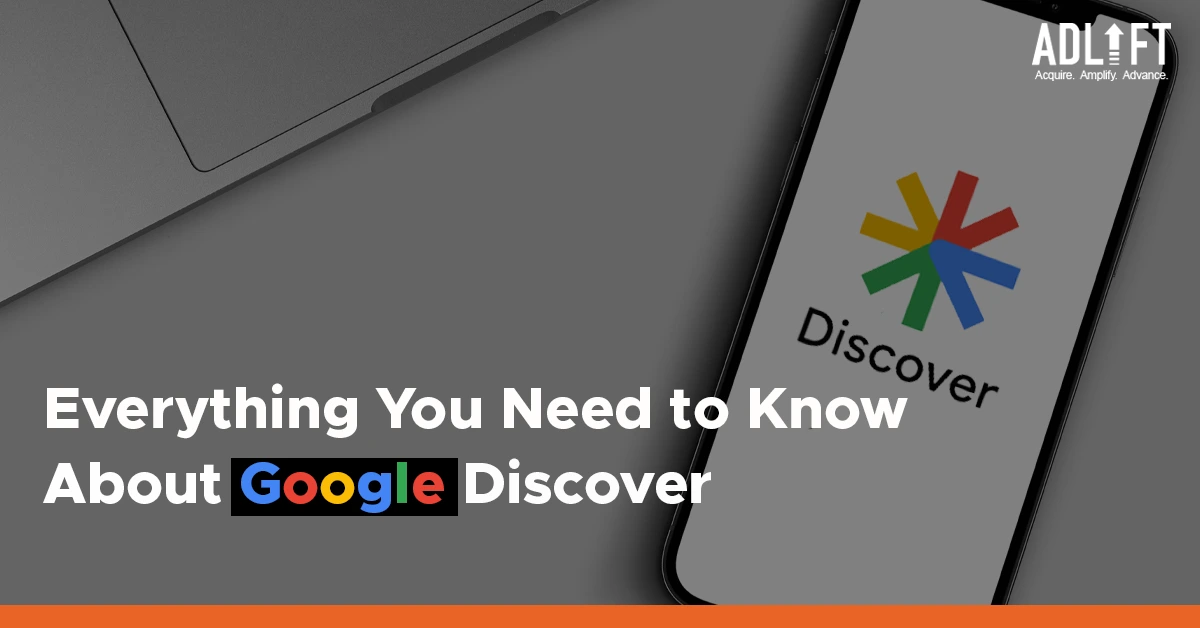Demystifying Google Discover: What You Must Know to Get Ahead

As an entrepreneur or marketer, one is constantly in pursuit of gaining a competitive edge. In this era of digital technology, this pursuit requires an in-depth understanding of search engine algorithms and how to optimize an online presence accordingly. Google, the world’s foremost search engine, is constantly updating its algorithms to remain relevant in the rapidly evolving digital landscape. One of the latest features of Google’s algorithm that is gaining traction among users is the Google Discover function.
What is Google Discover?
Google Discover, a feature introduced by Google in September 2018, was developed with the intention of delivering personalized content to users based on their search history and preferences. It materializes on the Google app and mobile browser homepage, displaying a heterogeneous mix of news articles, videos, and enduring content.
To comprehend the functionality of Google Discover, it is vital to understand that its primary purpose is to sustain users’ interest in the search engine by presenting them with content that they perceive as captivating and relevant. Consequently, it can serve as an efficacious tool for content creators and marketers who aspire to augment their audience reach.
How Google Discover Works
Google Discover uses a complex algorithm to determine what content to display to each user. It takes into account a user’s search history, location, and other factors to personalize the content displayed on their Google Discover feed.
The algorithm also considers the user’s behaviour, such as the content they click on, how long they spend on a page, and the frequency with which they interact with certain types of content. All of this data is used to improve the accuracy of the recommendations made by the Google Discover feed.

Tips for Optimizing Your Content for Google Discover
Now that you have a better understanding of Google Discover, let’s discuss some tips for optimizing your content to appear on the feed.
Focus on Quality Content
The first and most important tip is to create high-quality content that is relevant to your target audience. This means that you need to do proper research to understand what your audience is interested in and what topics they are searching for.
Ensure that your content is well-written, informative, and engaging. Use a mix of multimedia, such as images and videos, to make your content more visually appealing.
Optimize Your Headlines and Descriptions
The headlines and descriptions of your content are critical for getting users to click on your articles. Ensure that your headlines are catchy and descriptive so users know what to expect when they click on your content.
Similarly, the descriptions of your content should provide users with a brief summary of the article and what they can expect to learn from it. Make sure your descriptions are concise yet informative.
Use Relevant Keywords
Keywords are an essential part of any SEO strategy, and they are just as important for the Google Discover feed. Ensure that you use relevant keywords in your content, headlines, and descriptions to improve your chances of appearing on the feed.
However, avoid stuffing your content with keywords as this can be detrimental to your rankings. Instead, focus on using them naturally and in context.
Use High-Quality Images and Videos
Google Discover feed is a visual platform, so it’s crucial to use high-quality images and videos in your content. Ensure that your multimedia is relevant to the article and adds value to the user’s experience.
Use descriptive alt tags for your images to improve your chances of appearing in Google Discover’s image search results.
Make Your Website Mobile-Friendly
Google Discover is a mobile-first platform, so it’s crucial to ensure that your website is mobile-friendly. Ensure that your website is optimized for mobile devices, with fast loading times and an intuitive interface.
Monitor Your Performance
Finally, it’s essential to monitor your performance on Google Discover regularly. Use Google Search Console to track your impressions, clicks, and other metrics to see how your content is performing on the feed. Use this data to improve your content and optimize it further for Google Discover.
Conclusion
Google Discover represents a robust mechanism for expanding businesses’ audience reach and fortifying their online presence. Businesses can leverage this function by comprehending its modus operandi and customizing its content accordingly, thus augmenting their probability of surfacing in front of potential customers who possess a vested interest in their offerings.
It is imperative to concentrate on devising content that is of premium quality, stimulating and has a high potential for endowing value to the audience. Moreover, it is essential to utilize pertinent keywords and tags, optimize images and videos, and ensure website navigability and mobile-friendliness.
While Google Discover is only one aspect of Search Engine Optimization (SEO), it is still a critical component that should not be disregarded. By keeping abreast of the latest trends and best practices, businesses can ensure that they are optimally positioned for triumphing in the digital landscape that characterizes contemporary times.

FAQs
Google Discover is a feed curated by the search engine to deliver content on mobile devices. The articles and videos delivered to users are based on searches and related stories. Users can also further customize what they see on their feed by following topics that interest them.
Google Discover shows users content primarily based on what its automated systems believe to be a good match for their interests instead of showing results in response to a query. As a highly personalized feed, Discover actively tunes itself to a user’s interests and displays content that aligns with those interests.
Here is how you optimize your content for Google Discover:
- Use high-quality images
- Create fresh and engaging content
- Optimize content for mobile
- Understand your user interests
It analyzes users’ search histories, browsing patterns, and preferences to curate personalized content recommendations.
Include large, high-resolution, and engaging visuals that relate to the content. Ensure proper formatting and avoid clickbait.
Since Discover primarily targets mobile users, mobile-optimized content significantly boosts its visibility and user experience.
Use Google Search Console’s Discover report to track impressions, clicks, and user engagement metrics.
Research and integrate keywords that align with trending topics and user interests, ensuring content remains user-centric.
Google Discover influences SEO by prioritizing user engagement, relevance, and content quality. Unlike traditional search, it highlights content without direct queries, emphasizing the importance of timely, engaging, and user-centric content. SEO strategies must adapt to cater to these passive content discovery methods to maximize visibility on Discover.
Focus on timely, relevant topics. Prioritize user engagement, produce well-researched content, use compelling visuals, and stay updated on current events or trends.
Recent Posts
- Google Search Revolutionized for Educational Videos November 16, 2023
- Bidding Adieu to Google’s Page Experience Report November 9, 2023
- Google November 2023 Core Update November 3, 2023
- Unmasking Google’s October 2023 Spam Update October 5, 2023
- Unleash SEO Power: Must-Have Chrome Extensions for Website Success September 20, 2023
- SEO-Friendly URL Optimization: Mastering Structure for Better Ranking September 20, 2023
- Real Estate Marketing Ideas: Crafting a Results-Driven Marketing Strategy September 20, 2023
- The Anatomy of a Broken Link: Causes, Effects, and Solutions September 15, 2023
- Crafting an Informative FAQ Section: A Step-by-Step Guide September 14, 2023
- Local Business Schema Markup: Elevate Your Brand With The Magic September 14, 2023
Get
in Touch
Contact AdLift for a 360-degree marketing plan
